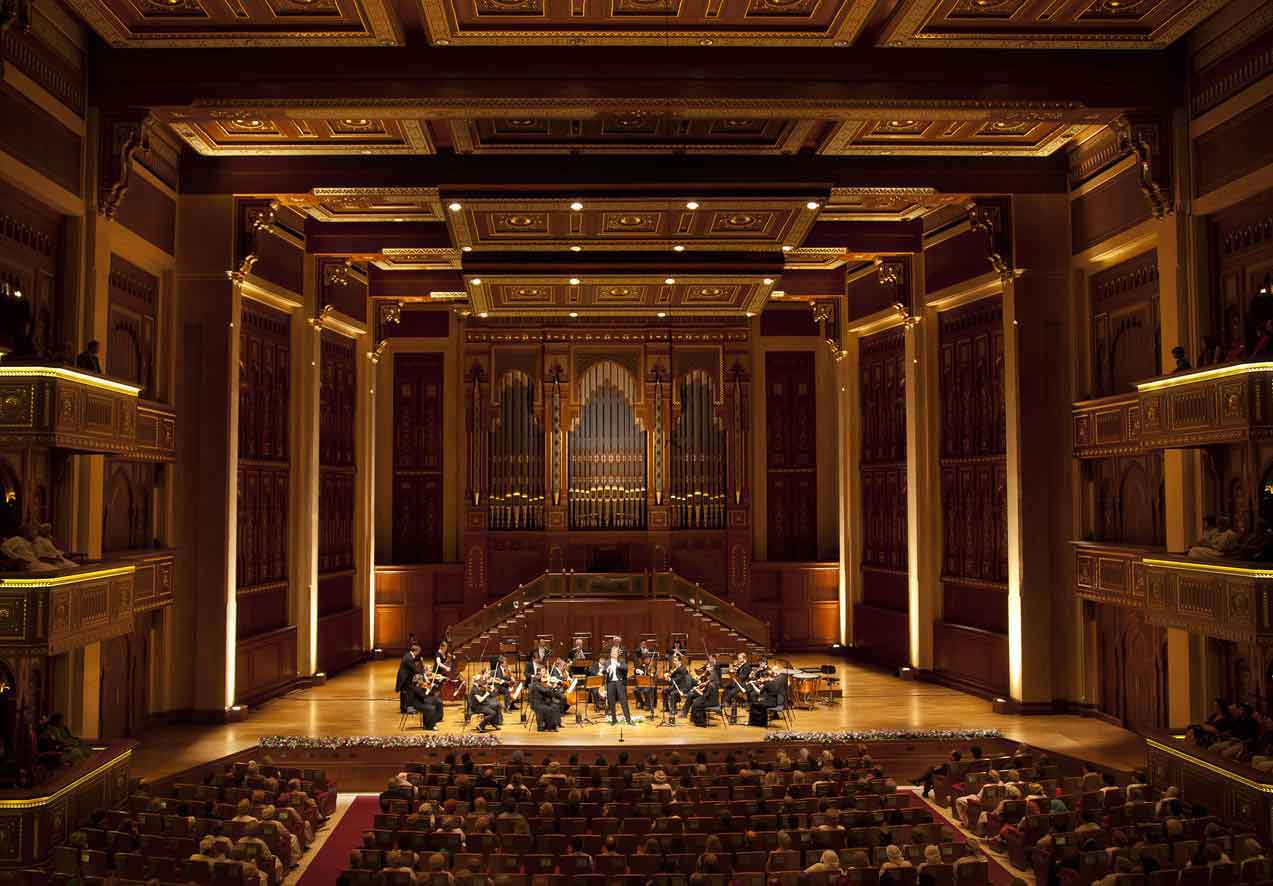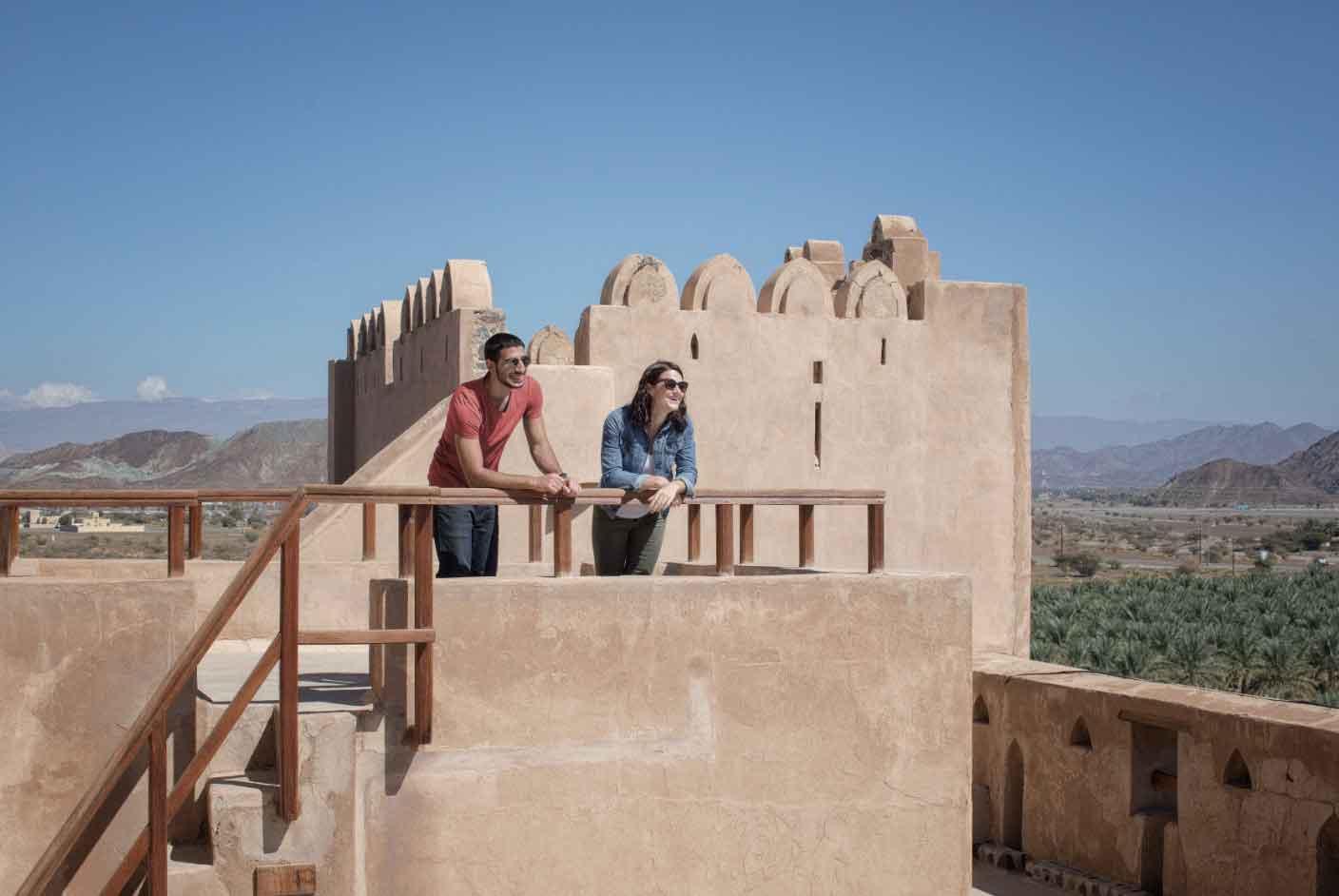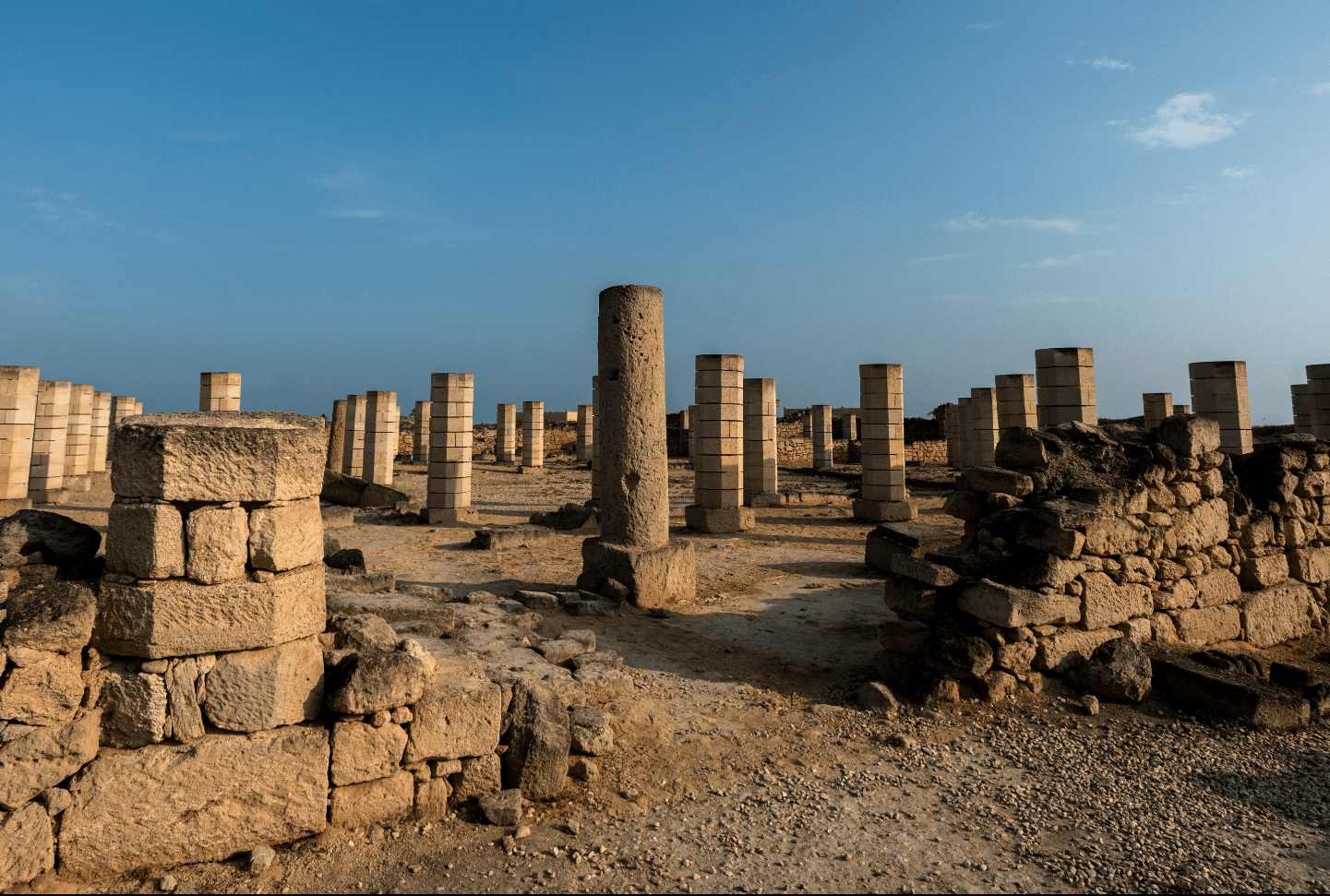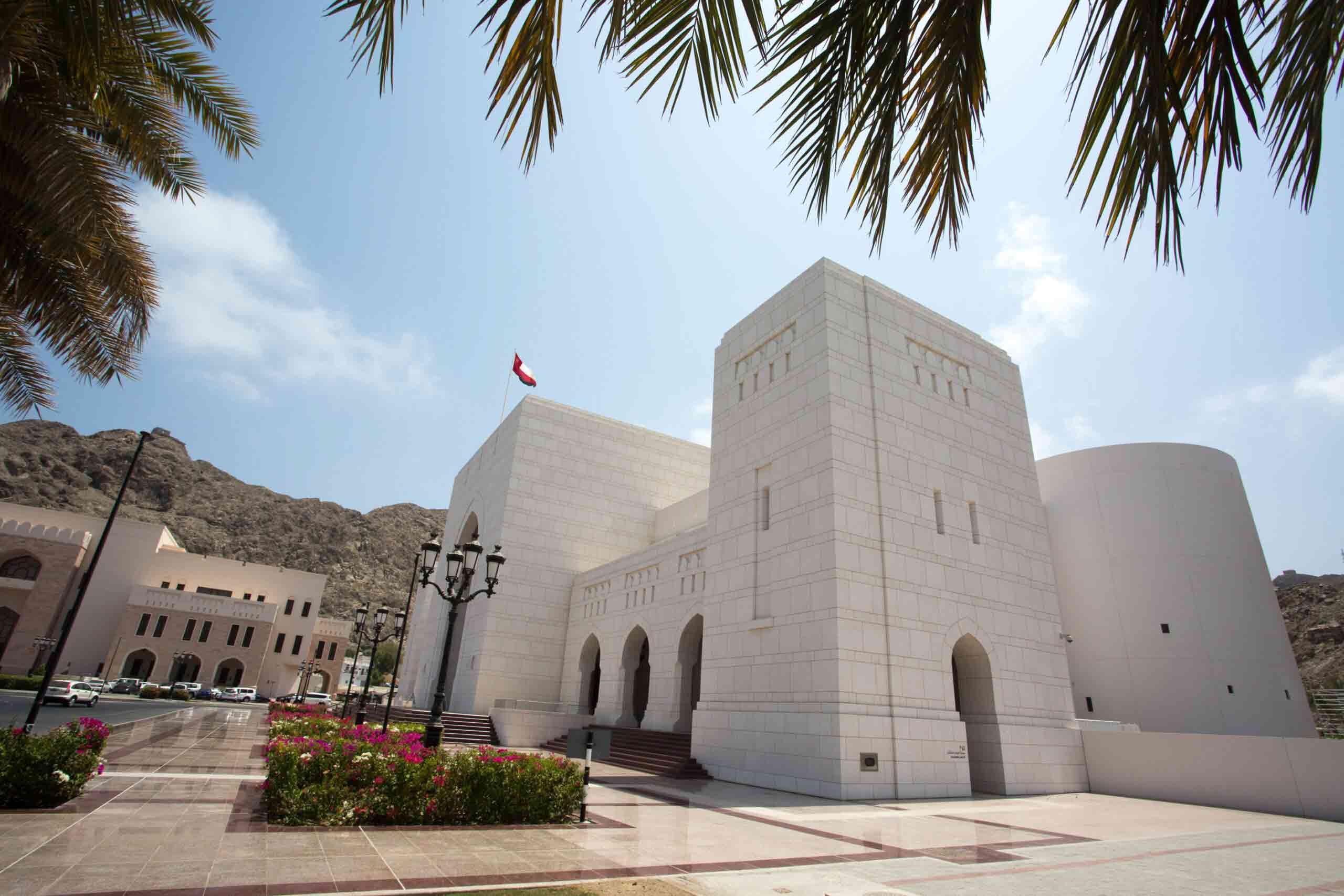Wadi Bani Habib
Cultural Activities
Cultural Activities
The Sultanate of Oman has a great variety of cultural and entertaining activities, if you are a fan of international music; you can spend a special evening at the Royal Opera House Muscat and enjoy watching one of the most famous international bands and legends of fine art that the house hosts throughout the time of year. If you are an admirer of the works of creative painters and sculptors, you can visit one of the art galleries in the morning, such as Bait Muzna Gallery, or Sarah Gallery in Bait Al Zubair, where the latest works of Omani and international artists are placed on display in special exhibitions. You can also attend some artistic performances of popular traditional music with ancient history.
Heritage and Crafts
Heritage and Crafts
The Sultanate of Oman places significant importance on preserving its heritage and traditional crafts. Omani artisans continue to practice traditional crafts that have been passed down through generations, while also adding modern touches to them. Artisans continue to create unique and diverse products, such as intricately designed silver jewelry, pottery, ceramics, and the famous Omani Khanjar (traditional dagger). They showcase their creativity in their crafts and products, offering them in the best possible way. These products can be purchased from lively markets spread across the country. Building traditional Omani ships, known as “dhows” or sailboats, in the city of Sur is one of the crafts that is still practiced to this day. Visitors often marvel at the exceptional skill displayed by these shipbuilders. They are impressed by the tremendous effort put into constructing every part of these ships.
Forts and Historical Sites
Forts and Historical Sites
Visiting Archaeological Sites
Visiting Archaeological Sites
The Sultanate of Oman is a country that is unique in its nature and its rich history, with events and stories written down in books and monuments that tell of heroism and the depth of communication with other civilisations. As one of the oldest independent countries in the Arab world, Oman has succeeded in blending modernity and ancient heritage while preserving the essential aspects of its culture and history. This makes it the perfect tourist destination for those wishing to visit a country that combine originality and modernity at the same time.The strategic location of Oman in the south of the Arabian Peninsula played a prominent role in gaining its position and its communication with ancient civilisations, which created human settlements dating back to different periods of history.On south Oman, ancient civilisations appeared that flourished on the paths of the Frankincense Road, including the civilisation of Wabar, whose archaeological discoveries date back to the Neolithic period, that is, between 5000 and 4000 years BC. As well as the Sumhuram site, which dates back to the period of the third century BC.The Salut archaeological site in the state of Bahla is one of the largest sites discovered in Oman and dates back to the third millennium BC. It witnessed, in a later period of history, the famous battle in which Malik bin Fahm al-Azdi defeated the Persians in the first century AD. This led to them being expelled from the areas where they controlled trade routes and copper mining sites.With the entry and spread of Islam throughout Oman around the seventh century AD, Mazen bin Ghaduba built the first mosque in Oman, which is Al-Midhamar Mosque in the Wilayat of Samail, which still exists to this day. In addition, it has been rebuilt several times over the years.Furthermore, with Sultan Qaboos bin Said – may God rest his soul in peace – assuming the reins of power in Oman during the period from 1970-2020 AD, Oman witnessed the building of a modern, prosperous country, drawing its foreign policy according to solid foundations and principles that enabled it to be one of the safest countries in the world. After him, Sultan Haitham bin Tariq – May God protect and preserve him – anticipated the reins of power in the year 2020 AD, with a renewed focus on building the land and the nurturing its inhabitants at the same time, to complete the blessed renaissance journey.
UNESCO World Heritage Sites
UNESCO World Heritage Sites
Oman currently has five UNESCO World Heritage Sites, all of which deserve to be visited first-hand.
Bahla Fort
This immense mud brick fortress was the first in Oman to be listed as a UNESCO World Heritage Site, in 1987. Since then, it has been beautifully restored and opened to the public, allowing visitors to learn more closely about the long history of the fort, which dates back to the third millennium BC. The site includes the archaeological Bahla Oasis, including the traditional souq, corridors, ancient mosques, and the old houses, as well as the surrounding wall that extends for about 12 km.
Archaeological sites of Bat, Al-Khutm and Al-Ain
The archaeological sites of Bat, Al-Khutm, and Wadi Al-Ain in the A’Dhahirah Governorate are not only recognised as a UNESCO World Heritage site, but also boast the title of the most complete collection of necropolises and settlements in the world, dating back to the Bronze Age (3rd Millennium BC). This site was listed at the UNESCO World Heritage List in 1988.
Land of Frankincense
In Dhofar, the Land of Frankincense encompasses the frankincense trees of Wadi Dawkah Reserve and the remains of caravan and trading settlements such as Ubar, Khawr Ruri and Al Baleed – highlighting the importance of frankincense for the flourishing trade in the region during ancient times. This site was listed at the UNESCO World Heritage List in 2000.
Aflaj Irrigation System of Oman
This ancient watering method is deeply rooted in Oman’s heritage, with over 3000 aflaj – or irrigation systems – still in use today. Using gravity to transport water from springs, the fair management of these waterways plays an important role in communities around the country. Five of the Omani falaj were listed on the UNESCO World Heritage List in 2006 under the name “Aflaj Irrigation System of Oman.” The five falaj are: Falaj Daris and Falaj Al-Khatmeen in Nizwa, Falaj Al-Maysar in A’Rustaq, Falaj Al-Malki in Izki, and Falaj Al-Jillah in Sur.
Ancient city of Qalhat
The site of the Ancient city of Qalhat in Sur has an exceptional international value as a trading exchange between Oman and the ancient world civilizations. It was one of the important commercial ports in the Indian Ocean, especially the trade of Arabian horses with India. It considered as a distinctive example of the architecture and planning of active port cities in the Middle Ages. This site was included in the UNESCO World Heritage List in 2018.
National Museum
National Museum
Opening Times:
| Days | Times |
| Saturday – Thursday | 10 am – 5 pm |
| Friday | 2:00 pm- 6 pm |
Admission Fee:
| Class | Price |
| Citizens and citizens ofGCC countries | 1 OMR |
| Residents | 2 OMR |
| Tourists | 5 OMR |
Oman Across Ages Museum
Oman Across Ages Museum
Opening Times:
| Section | Saturday – Thursday | Friday |
| Main Gate Knowledge Center Museum Facilities | 09:00 am – 09:00 pm | 09:00 am – 09:00 pm |
| Museum Exhibition Halls | 09:00am- 05:00 pm | 1:30pm – 07:00 pm |
Admission Fee:
| Class | Price |
| Citizens and citizens of GCC countries | 1 OMR |
| Residents | 2 OMR |
| Tourists | 5 OMR |
Museums
Museums
Oman is full of specialised museums that tell a part of the history of this ancient country and the march of the first Omanis who built many edifices, that most of them are still standing to this day. Some of these museums also tell pictures of the role of oil in building the modern Omani state. You can also follow the story of the Omani frankincense that was carried by the ships of the previous generation to reach the corners of the earth. These museums that are spread almost all over the Sultanate of Oman, where you can see them in its glory and forts with walls or in the old houses built of bricks, along with those modern and modern buildings that show you ancient stories in a high-quality technical style.You can visit some or all of the museums to see the extent of the achievement made by the Omanis over the past years, which must give you a glimpse into the bright future that awaits you.









